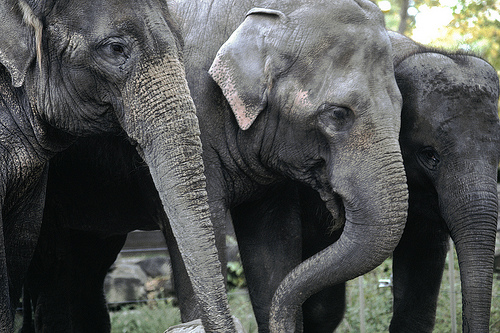Elephant Transportation Fact Sheet
When did the elephants leave the Calgary Zoo?
Tuesday May 20, 2014 at 2:30p.m.
How do you move an elephant?
Custom-made, 10,000-pound elephant-sized travel crates will keep the females contained and safe while on the move.
Calgary Zoo keepers worked slowly and diligently to ensure that the elephants were introduced to the crates to ensure they would feel calm and comfortable entering and standing in their crates.
The elephant crates were loaded onto two large flatbed trucks.
Zookeepers and veterinary staff from both the National Zoo and Calgary Zoo observed the elephants during the 60-hour, 2,500-mile international trip via television monitors and stopped every few hours to provide the elephants with food and water, and to ensure they were doing well.
How long was the trip?
60-hour, 2,500-mile international trip.
What route was taken?
- Start point:
Calgary Zoo, Botanical Garden & Prehistoric Park
1300 Zoo Road NE
Calgary, Alberta
Canada T2E 7V6 - End point:
Smithsonian's National Zoo
3001 Connecticut Ave. NW
Washington, DC 20008 Route - Total distance (approximately):
- 2480.23 mi, 3991.54 km
- Calgary - East on Hwy 1 into and thru Saskatchewan and into Manitoba
- Brandon, Manitoba - South on Hwy 10
- Canadian/US Border - (Dunseith crossing) - South on Hwy 281
- Jamestown, North Dakota - East on I-94
- Portage, Wisconsin - South on I-39
- Bloomington, Illinois - South on I-74
- Indianapolis, Indiana - East on I-70
- Frederick, Maryland - South on I-270
- 2480.23 mi, 3991.54 km
What was packed for the elephants on their journey?
- 200 lbs. of grain
- 24 bales of hay
- Case each of watermelon, cantaloupe and grapes
- A 300 lb. ball
- 10 bags of wood shavings for the crates
- 3 large elephant feeders
- 2 kegs for enrichment training
- 2 popcorn blowers
Each truck has a 65 gallon water tank which was refilled along the way

